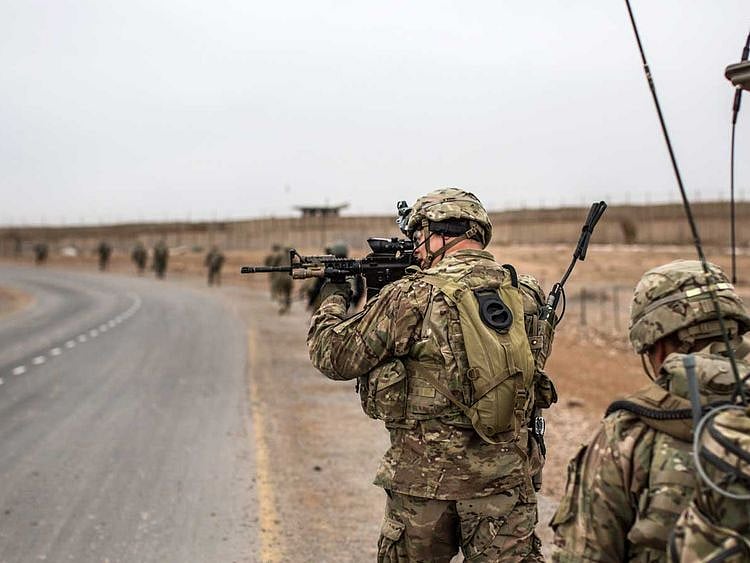With an unofficial September 1 deadline approaching, coming days could see the intensification of the post-9/11 US ‘end-game’ in Afghanistan. While the Trump team asserts a potential upcoming “peace deal” with the Taliban is a vindication of its ‘Asian-centred strategy’ to the country, it more reflects the desire of the White House to draw down US troops prior to next year’s US elections.
It was two years ago, in August 2017, that then-Secretary of State Rex Tillerson announced the Trump team’s ‘new’ Asian approach to Afghanistan aimed at “getting the Taliban to the negotiating table”. Tillerson made clear that Pakistan was central to what he asserted was a holistic regional strategy, with India playing an upgraded role too, but no mention was made of other key countries such as China which is an increasingly important player in Afghanistan.
Even at the time of Tillerson’s intervention it was relatively clear that the true motivation was to try to cut a deal with the Taliban in advance of Donald Trump’s potential re-election. The then secretary of state’s announcement came less than 24 hours after Trump himself announced plans to entrench US military involvement in Afghanistan, a major reversal on his 2016 campaign pledge, a cause of intense frustration to the president.
To distract from Trump’s U-turn, emphasis was put on the new post-Obama approach toward the country. Yet, in reality there has been significant policy continuity with the previous administration’s strategy.
The news of the potential US peace deal with the Taliban, which would reportedly involve withdrawal of a significant number of foreign forces in exchange for security guarantees by the Taliban, comes as the country stands at a critical crossroads with much uncertainty on the horizon. This is not least given the continued violence across the nation, with the insurgents now controlling more territory than any point since 2001, and the next presidential election scheduled for late September.
With a potential peace deal pending, for which US Special Representative for Afghanistan Zalmay Khalilzhad has set a September 1 deadline, many in the nation are understandably anxious about their collective futures. While fragile gains have been made since the Taliban’s fall from power in 2001, the country faces a daunting array of economic, security, and political risks.
The biggest challenge may remain the country’s internal security situation from Taliban militants, despite any pledges that are made by the insurgents. From 2009 alone, the UN has recorded some 33,000 conflict-related civilian deaths, including 1,300 in the first six months of this year.
Bleak economic scenario
Currently, there are about 20,000 foreign troops as part of the US-led Nato mission to train, assist and advise Afghan forces. Fears have been repeatedly raised that this force (now a fraction of the previously 150,000-strong combat presence) is not big enough. Yet, this footprint also remains key for ensuring training and cohesion for the several hundred thousand strong Afghan police and military personnel (which have day-to-day responsibility for security in the country) which may otherwise disintegrate.
On the economic front, the news is not good either. Reconstruction has been slow, unemployment remains very high, and over a million Afghans are internally displaced in the country, with millions more refugees believed to be in Pakistan and Iran. And this, despite estimated that Washington has spent more on Afghan reconstruction than the cost of the Marshall Plan that helped rebuild Europe after the Second World War.
It is also clear that, since 2001, the economy has not been diversified enough from drug exports such as opium and heroin, despite the fact that the country has abundant natural resources — gas, minerals and oil — with an estimated value of some $3 trillion. A related problem is corruption with Transparency International ranking Afghanistan as one of the most corrupt states in the world.
There remain causes for optimism, not least because numerous fragile gains remain in place from the unseating of the Taliban regime in 2001. One, qualified, success is the country’s fledgling democracy.
Despite the problems afflicting the country, the country’s national unity government has survived several years after a landmark power-sharing agreement was reached in 2014 between President Ashraf Gani and Chief Executive Abdullah Abdullah. The creation of the national unity government, and the election of Gani who is standing for re-election, represented the first democratic transfer of power in the country’s history. The fact that the national unity government has not collapsed to date has helped consolidate the legitimacy of the new post-Taliban political system.
Other gains include Afghanistan’s accession to the World Trade Organisation and wider moves to revive economic links with the outside world, including the modern Silk Road, a new rail route connecting the country to China and Central Asia, and an electricity grid project across Afghanistan, Turkmenistan, Uzbekistan, and Pakistan. Meanwhile, there are greater number of children (especially girls) enrolled at schools; greater recognition of women’s rights, and spread of technologies such as the internet and cellphones across the country.
Yet, much of this may now be in jeopardy again, depending upon which path Afghanistan goes down at the current crossroads. There remains a particular prospect of even greater political, security and economic instability if the reconciliation process with the Taliban does not go as planned, threatening the fragile gains since 2001.
— Andrew Hammond is an Associate at LSE IDEAS at the London School of Economics.
Sign up for the Daily Briefing
Get the latest news and updates straight to your inbox
Network Links
GN StoreDownload our app
© Al Nisr Publishing LLC 2025. All rights reserved.
